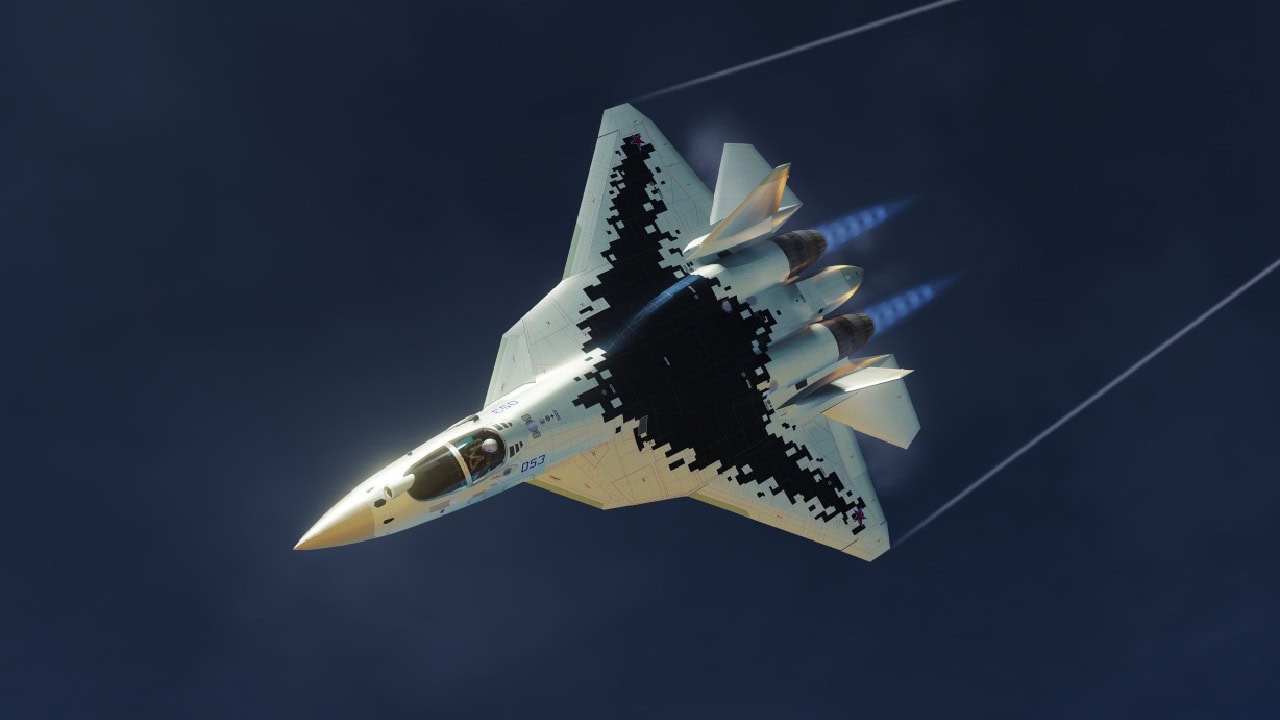Russia Primed for a Fight With New Combat Drone – As more Su-57 Felon stealth fighters come online, the Russian air force is looking forward to using the S-70 Okhotnik-B “Hunter” drone in a teaming arrangement.
(Subscribe to Our YouTube Channel Here. Check out More 19FortyFive Videos Here)
This “loyal wingman” concept would feature up to four of the S-70 stealth drones that could fly ahead of the Felons for early warning, targeting, and ground strike missions.
Su-57 and S-70: Teamwork Makes the Dreamwork
The Okhotnik-B unmanned combat aerial vehicle is not expected to fly regularly until 2023 or 2024 as many features are still in development.
But it will eventually give Russia a modern drone that could make the Su-57 manned fighter more lethal.
Large Combat Drone with Subsonic Speed
The drone was introduced in 2018 when ground testing commenced, and it first flew in 2019. It is being produced by the Sukhoi division of the Russian Aircraft Corporation at the Novosibirsk aviation plant in western Siberia.
It has a flying wing design, and it is quite large for a drone. The S-70 weighs 20 tons and is 46 feet long with a wingspan of 62 feet. It can fly around 621 miles per hour.
Similar to the United States Combat Drones
Russia may have used the American-made X-47B aircraft carrier-borne flying wing drone for inspiration.
Flying wings have better levels of radar evasion and the Okhotnik-B should not disappoint the Russian air force when it comes to stealth attributes.
Meanwhile, the Americans are forging ahead with their own combat drone programs. The U.S. Navy is leaping ahead of the Okhotnik program by signing a $15.5 million contract to for two XQ-58A Valkyrie stealth unmanned aerial systems.
Long Range with a Big Weapons Load
The Okhotnik-B will have a Sukhoi turbofan AL-41F1 engine producing a range of over 3,700 miles.
This is located in the rear of the aircraft with exhaust exiting from a circular port. The 4,400 pound weapons bay is internal and will hold precision-guided missile and bombs.
Weapons Testing Is Going According to Plan
The first successful weapons test with air-to-air and dumb bombs occurred in 2020.
The latest weapons test happened last summer with the same advanced air-to-surface missiles that the Su-57 will be using.
It Will Be Adept at Electronic Warfare
The Okhotnik is not only a strike drone, it can also conduct electronic warfare duties along with collecting reconnaissance and intelligence data.
The Leap Ahead May Slow Down
Russia may be optimistic about its reported delivery by the mid-2020s.
Much of the technology is borrowed from the MiG Skat drone program that faltered during the aughts. Russia did not start on the Okhotnik until around 2012 after the Skat had been cancelled that year.
Plus, Russia is being pinched by international sanctions that are making semiconductors in short supply. This could deal the Okhotnik a blow and delay its delivery.
The drone is also not autonomous and needs an operator on the ground to guide the flight.
Will the Loyal Wingman Concept Work with Su-57?
The teaming arrangement with the Su-57 was tested successfully in 2019 so it appears that aspect of its concept design is progressing. The loyal wingman mode is likely the most exciting capability of the Okhotnik-B. Teaming gives the Su-57 a force multiplier effect, especially when the drone is in combat mode.
Russia has much more testing to do before it can claim victory in the drone’s development schedule. It will probably not be ready for fighting in the war in Ukraine, but if the conflict becomes frozen and lasts the next two years, we could see the Su-57 and the Okhotnik-B flying missions together over Ukraine. This would be the ideal scenario for the Russia air force and would keep the United States working rapidly on its own drone teaming arrangements, especially with the F-35 and F-22.
Author Expertise and Experience: Serving as 19FortyFive’s Defense and National Security Editor, Dr. Brent M. Eastwood is the author of Humans, Machines, and Data: Future Trends in Warfare. He is an Emerging Threats expert and former U.S. Army Infantry officer. You can follow him on Twitter @BMEastwood. He holds a Ph.D. in Political Science and Foreign Policy/ International Relations.

